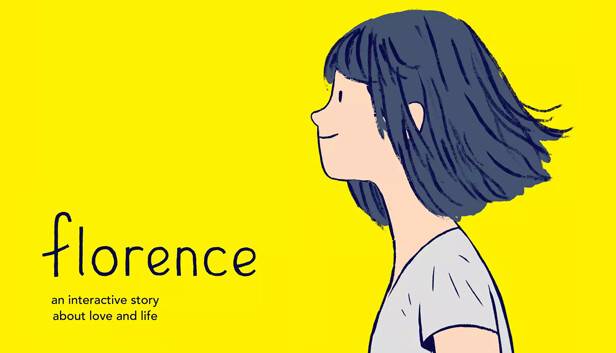Florence successfully showcases feminist gameplay by presenting a well-structured feminist storyline, interactive mechanics that encourage reflections on agency, and music and artistic elements that build empathy through the aesthetics of sensations and narrative.
Florence is an interactive video game developed by the Australian studio Mountains and published by Annapurna Interactive. It is available on iOS, Windows, and Nintendo Switch. I played it on an iPad Pro.
Florence’s storyline diverges from the traditional love story and aligns with feminist ideals. Although the main storyline revolves around Florence falling in love with Krish and how he helps her rediscover her passion for art and the colors in her life, it does not end with the typical ‘happily ever after’ found in many love stories. Instead, it concludes with Florence’s personal growth and her rediscovering her passion independently. When I played the game, I noticed an interesting detail: after Florence and Krish break up and her world becomes colorless again, the first color she sees is on the phone she uses to call her mom. This narrative choice creates a main character who becomes independent and values relationships with other females, clearly aligning with feminist ideals. I found the call to her mother particularly powerful, as Florence had never taken calls from her mom seriously earlier. This moment marks the re-establishment of the mother-daughter relationship and highlights the empowering connections between women. Chess claims that ‘a good feminist story is one that is conversational, personal, and relays narratives that surpass the expectations we tend to have of those ushered in to and for patriarchal audiences.’ In Florence, the plot surpasses the patriarchal expectations of a love story, where women are typically empowered by men. Instead, it portrays a young woman who is strong enough to move on, grow, and continue pursuing her passion without male involvement, incorporating feminist elements into the game’s central narrative aesthetics.



Fig1. The mudaneness of world after the break up

Fig2. First color in the world was in the action to call Mum
Florence’s interactive game procedures provide players with a strong sense of agency. The storyline gradually unfolds through the players’ actions, allowing them to control the pace of storytelling depending on how long it takes them to complete certain tasks. This mechanic gives players the agency to act ‘as Florence,’ experiencing what she experiences and becoming empathetic towards her. For example, in Chapter 2: Memories, players are tasked with creating paper art as 7-year-old Florence, where they can spend as much time as they want to create interesting pieces. This design choice allows players to feel young Florence’s passion for art. Another memorable aspect is how players complete puzzles to fill the chat bubbles, as if they are controlling what Florence says and how quickly she speaks in each situation. Although players are not given many choices, they can control the flow of the storyline by completing these tasks at their own pace. This mechanic gives them a sense of agency and fosters empathy towards the characters.


Fig3. Paper art task where you have so much freedom to create whatever


Fig4. Complete chat bubble to communicate as Florence
Together with its mechanics, the music and art design of Florence create a sensational journey, fostering a tremendous amount of empathy in players towards Florence. One memorable part for me was Florence’s first encounter with Krish, where she is attracted by the beautiful cello music and even starts to ‘fly,’ following the music notes. The incorporation of music and color at just the right moments draws players into Florence’s world, making her journey heartfelt and deeply touching. Another poignant moment was when the picture tore into pieces and drifted away. The music became so sad, and the continuous motion of each piece on the screen made me feel what Florence felt—that what is lost would never come back. Even though we can put the pieces in the right positions, it wouldn’t be the same as the original. As Chess claims, ‘A feminist video game story has particular potential for empathy building.’ Florence’s success in building empathy is largely due to its music and art, which contribute to an exceptional aesthetic of sensation.

Fig5. Chasing the music notes from Cello

Fig6. The photo pieces that continuously drift apart
One critique I have for Florence, however, is the lack of choices in the narrative. Players’ input only changes the pace of the game, but not the content. There is no way to stop Florence from falling in love with Krish, nor can players prevent their quarrels and eventual breakup. I believe that having a bit more freedom would encourage players to reflect more on their choices and provide a greater sense of agency throughout the gameplay.
Overall, Florence demonstrates a feminist narrative, character agency, and appeals to players’ empathy, which are all great reflection of its success in demonstrating feminism in gameplay, and key methods for it to create aethestics of narrative and sensations.
Discussion Question: How can we ensure that feminist gameplay is accessible to all genders and not just considered by male gamers as ‘games for women’ (which implicitly means that males don’t play them)?




